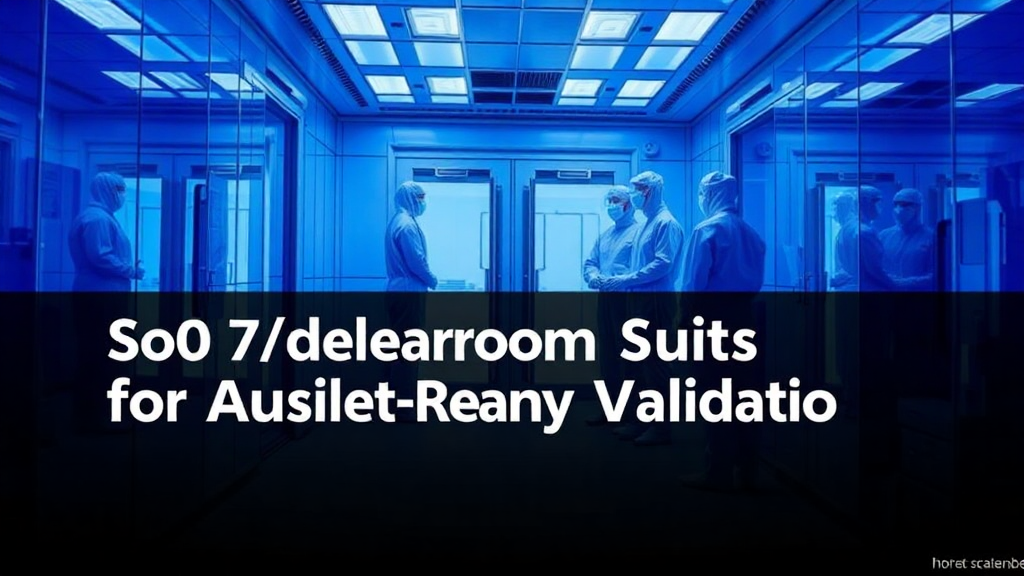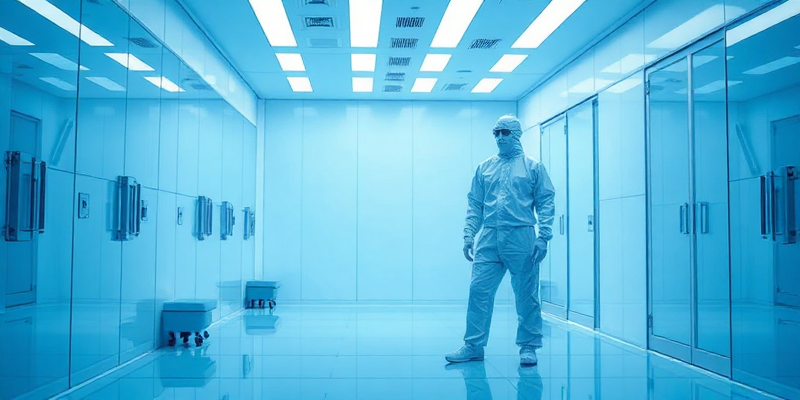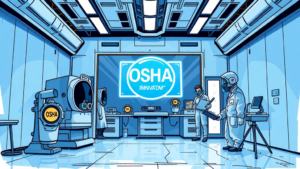ISO 7 Cleanroom Suits for Audit-Ready Validation

In the demanding world of medical packaging, validation managers face the ongoing challenge of maintaining cleanroom compliance while preparing for rigorous audits. The integration of ISO 7 cleanroom suits with real-time particle monitoring capabilities represents a significant advancement in meeting these challenges. This comprehensive guide explores how these specialized garments not only ensure compliance with Class 10,000 requirements but also streamline the audit preparation process through innovative monitoring solutions.
Why ISO 7 Cleanroom Suits Are Essential for Audit Readiness
Validation managers in medical packaging facilities understand that cleanroom compliance isn’t optional—it’s essential. ISO 7 cleanroom suits (corresponding to Class 10,000) serve as the frontline defense against particulate contamination that could compromise product integrity and lead to failed audits.
The stakes are particularly high during compliance audits, where inspectors scrutinize not just current conditions but historical particle count data. Traditional cleanroom garments may meet basic requirements, but audit-ready ISO 7 suits offer several distinct advantages:
- Enhanced Particulate Barrier Performance: ISO 7 suits are specifically engineered to limit particle shedding from operators while providing superior filtration of environmental particles.
- Documented Compliance Trail: Validation-focused suits include features that support documentation requirements, including lot tracking and material certification.
- Reduced Cross-Contamination Risk: Properly designed ISO 7 apparel minimizes the risk of transferring contaminants between cleanroom zones—a critical factor auditors evaluate.
- Consistent Performance Under Scrutiny: When auditors test particle counts in operation, reliable ISO 7 suits maintain their protective properties even during movement and stress conditions.
Investing in appropriate ISO 7 cleanroom suits isn’t merely about passing inspections—it’s about establishing a foundation for consistent compliance that validation managers can rely on during surprise audits and scheduled reviews alike.

Real-Time Particle Monitoring Integration
The integration of real-time particle monitoring technology with ISO 7 cleanroom suits represents a paradigm shift in compliance management. This innovation allows validation managers to move from reactive to proactive compliance strategies.
How Integration Works
Modern ISO 7 suits can incorporate small, lightweight sensors that continuously monitor particulate levels in the operator’s immediate environment. These sensors transmit data to centralized monitoring systems, allowing for:
- Immediate Contamination Alerts: Operators receive notifications when particle counts approach critical thresholds, enabling immediate corrective action.
- Personalized Compliance Data: Each suit wearer generates individual compliance records that validation managers can review to identify training needs or procedural improvements.
- Zone-Specific Analysis: Particle data can be mapped to specific cleanroom locations, helping identify problem areas before they become audit findings.
- Trend Analysis for Predictive Compliance: Historical data from integrated monitors enables validation teams to predict potential compliance issues before they occur.
The particle monitoring tools integrated within these suits provide validation managers with unprecedented visibility into cleanroom conditions, transforming audit preparation from a stressful scramble to a continuous quality improvement process.

Key Features of Audit-Ready Cleanroom Apparel
Not all ISO 7 cleanroom suits are created equal. Validation managers preparing for audits should look for these specific features that enhance both compliance and auditability:
- Material Certification Documentation: Look for suits with comprehensive material testing data that meets or exceeds ISO 7/Class 10,000 requirements.
- Traceable Components: Each component should have lot traceability to support audit investigations if contamination occurs.
- Sealed Seam Construction: Ultrasonic welded or bound seams minimize particle generation compared to traditional stitched seams.
- Integrated Grounding Capabilities: Static dissipative properties with documented testing results to prevent particle attraction.
- Ergonomic Design for Protocol Adherence: Suits designed for comfort increase protocol compliance by reducing the temptation to adjust garments improperly.
- Compatible Sensor Integration Points: Purpose-built attachment points for particle monitoring sensors ensure consistent placement and reliable data collection.
- Documented Reprocessing Validation: For reusable garments, comprehensive reprocessing validation data should be available for auditor review.
These features collectively create a garment system that not only performs to ISO 7 standards but also generates the documentation trail auditors expect to see when evaluating cleanroom compliance.

Best Practices for Maintaining Cleanroom Compliance
While proper ISO 7 cleanroom suits form the foundation of audit readiness, validation managers must implement these best practices to maintain ongoing compliance:
- Implement Consistent Gowning Protocols: Standardize and document gowning procedures with visual aids at gowning stations.
- Establish Regular Verification Schedules: Create calendared verification of particle counts that integrates data from suit-based monitoring.
- Document Corrective Actions: When particle count excursions occur, document both immediate and systemic corrective actions taken.
- Train on Particle Sources: Educate all cleanroom personnel on common sources of particle generation and mitigation techniques.
- Perform Mock Audits: Use real-time particle monitoring data to conduct surprise internal audits that mimic actual compliance inspections.
- Review Trending Data Monthly: Schedule regular reviews of particle count trends to identify potential issues before they become audit findings.
- Maintain Calibration Records: Keep detailed records of particle counter calibration for both integrated and standalone monitoring systems.
By combining these practices with proper ISO 7 cleanroom apparel, validation managers create an environment where audit readiness becomes the natural state rather than a special preparation mode.
Case Study: Achieving Audit Readiness at PharmaPack Solutions
A leading pharmaceutical packaging company faced recurring challenges with inconsistent particle count results during FDA audits, particularly in their Class 10,000 filling areas. Despite following standard protocols, their traditional cleanroom garments weren’t providing the consistent protection needed.
After implementing integrated monitoring ISO 7 cleanroom suits, they experienced:
- 78% reduction in particle count excursions during operations
- 100% success rate in their next three regulatory audits
- 40% decrease in time spent preparing documentation for audits
- Significant improvement in operator compliance with gowning protocols
The validation manager reported that having real-time particle data from operators’ suits provided both early warning of potential issues and comprehensive documentation that impressed auditors with its thoroughness and transparency.
Häufig gestellte Fragen
What is the difference between ISO 7 and ISO 5 cleanroom suits?
ISO 7 (Class 10,000) suits are designed to control environments with maximum particle counts of 352,000 particles ≥0.5µm per cubic meter, while ISO 5 (Class 100) suits must meet much stricter standards of 3,520 particles ≥0.5µm per cubic meter. ISO 7 suits typically use different materials and may have less stringent seam construction than ISO 5 suits but still provide excellent contamination control for many medical packaging applications.
How does real-time particle monitoring improve audit readiness?
Real-time particle monitoring creates a continuous documentation trail that demonstrates ongoing compliance rather than point-in-time measurements. This provides auditors with comprehensive data showing consistent control and immediate response to any excursions, significantly strengthening a facility’s compliance position.
Can ISO 7 cleanroom suits be customized for specific industries?
Yes, ISO 7 cleanroom suits can be customized with industry-specific features such as additional barrier properties for biologics handling, enhanced chemical resistance for specific processing environments, or specialized monitoring integration points for particular manufacturing processes.
What certifications are required for ISO 7 cleanroom apparel?
While no single certification is universally required, reputable ISO 7 cleanroom apparel should include material certifications for particle shedding performance, documentation of bacterial filtration efficiency, and evidence of testing to IEST recommended practices. For medical packaging applications, additional documentation regarding biocompatibility may be required.
Maintaining audit-ready validation in medical packaging facilities demands a comprehensive approach to cleanroom compliance. By implementing ISO 7 cleanroom suits with integrated particle monitoring capabilities, validation managers can transform their compliance programs from reactive to proactive, ensuring consistent readiness for even the most rigorous audits.
Download Audit Preparation Toolkit
For more information on compatible particle monitoring solutions for your cleanroom environment, visit our particle monitoring tools page.








